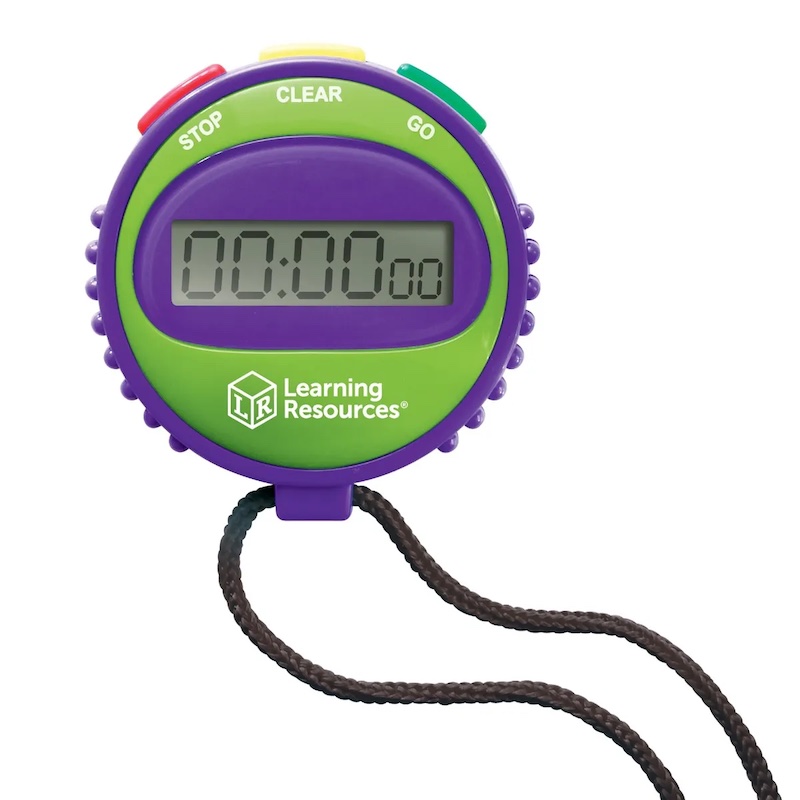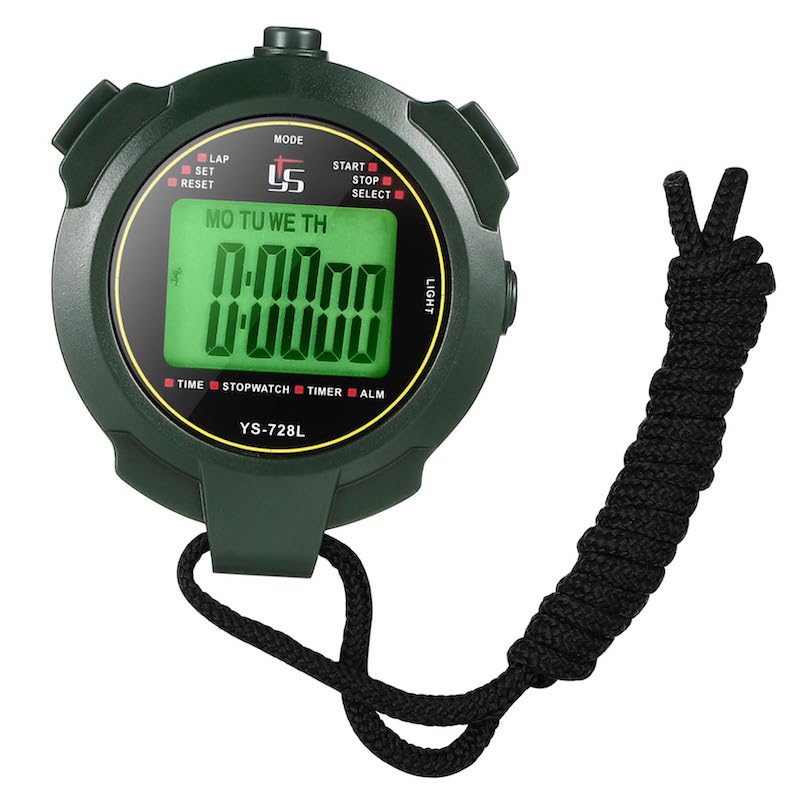Understanding the Importance of Stop Watches for Kids
Stop watches for kids are more than just timekeepers. They play a crucial role in the lives of young, active children. Firstly, stop watches help instill a sense of time management. They encourage children to understand the value of time and the importance of punctuality. Secondly, they’re invaluable in sports and physical education. A stop watch for kids allows them to time their runs, swims, or cycles, setting personal goals and tracking improvements. Thirdly, educational activities often rely on timing. Stop watches make learning fun by bringing an interactive element to time-bound tasks and experiments. Ultimately, they teach kids responsibility, as they learn to handle and care for a piece of equipment. When choosing a stop watch for children, it’s vital to understand that it’s not just a gadget, but a tool that contributes to their overall development.
Key Features to Consider When Buying a Stop Watch for Children
When selecting a stop watch for kids, it’s essential to focus on certain features. Parents and educators should look for stop watches that balance functionality with kid-friendly design. Here are top features you should consider:
- Ease of Use: Kids should be able to operate their stop watches easily. Look for devices with simple interfaces and easy-to-press buttons.
- Durability: Children are active and can be rough on gadgets. A robust and shock-resistant stop watch will endure drops and knocks.
- Size and Weight: A child’s wrist is much smaller, so the stop watch should be lightweight and appropriately sized for a comfortable fit.
- Water Resistance: This is vital for usage during various outdoor activities and sports that involve water.
- Readability: The display should be clear with big numbers. A backlit screen can be a bonus for visibility in different lighting conditions.
- Sound and Alarms: Audible alerts are important for indicating the start and end of timing intervals.
- Battery Life: Long battery life ensures the stop watch is ready for use whenever the child needs it without constant recharging or battery changes.
- Colorful Designs: Vibrant colors and fun themes make the stop watch appealing and can motivate children to use them more often.
Choosing the right stop watch for kids requires attention to these features to ensure the tool is both practical and enjoyable for young users. This way, children can get the most out of their timing activities, whether in learning scenarios or during sports, while also having a device that withstands their energetic lifestyle.
Durability and Build Quality: Essential for Kid’s Usage
Choosing the right stop watch for kids isn’t just about the features; durability is key. These watches need to withstand daily wear and tear, often in the hands of energetic youngsters. A durable stop watch can cope with drops, knocks, and the odd scrape. It keeps ticking even after a tumble on the playground or a bump during a sports session. This resilience is thanks to a strong build quality.
When assessing a stop watch, check for a sturdy case and a secure strap. The materials should be tough yet safe for children. A good choice is a watch with a shock-resistant body and water-resistant features. This ensures that the stop watch survives splashes or rain during outdoor activities. The lens covering the display is also important. It should be scratch-resistant so that the screen remains clear and easy to read.
To sum up, a stop watch for kids must be strong enough to handle their active lifestyle. Check for high-quality materials and a design that promises durability. With this in mind, parents and educators can select a reliable stop watch that can go the distance with their child.
User-Friendly Design: Simplifying the Time-Tracking Experience
When selecting a stop watch for kids, user-friendly design is crucial. A complicated device can frustrate a child and distract them from the task at hand. Thus, a stop watch with a simple layout and functions is ideal for children to operate independently. Here are some tips to ensure the design of the stop watch enhances the time-tracking experience for kids:
- Intuitive Buttons: Look for stop watches with buttons that are easy to find and press. Kids should not struggle to start, stop, or reset the timer.
- Clear Display: The screen should display numbers in a large, bold font. Children will then find it easy to read times at a glance.
- Lightweight Design: A lightweight stop watch won’t weigh a child’s wrist down. It allows them to move freely during activities.
- Adjustable Straps: Straps that can adjust ensure a snug fit on small wrists. This stops the stop watch from sliding or falling off.
- Simple Interface: The stop watch for kids should have a straightforward interface. Complex settings or modes can be confusing.
- Accessible Battery Case: Make sure the battery compartment is easy to access. Parents should be able to replace batteries without hassle.
By focusing on a user-friendly design, parents can provide their child with a stop watch that simplifies timing tasks. This can encourage kids to engage more in time-related activities, fostering independence and punctuality.
Fun Elements: Colors and Themes That Attract Kids
When choosing a stop watch for kids, appealing aesthetics are nearly as important as practicality. A visually engaging stop watch will capture a child’s attention and can even become a favored accessory. Here’s how colors and themes play a vital role in the selection process:
- Vibrant Colors: Bright, bold colors are eye-catching to kids. They are drawn to stop watches that stand out with lively hues.
- Fun Themes: Themes like superheroes, animals, or popular cartoon characters make stop watches exciting for kids. This may encourage daily use.
- Customizable Options: Some stop watches offer interchangeable bands or customizable faces. Kids love having the ability to personalize their gadgets.
- Matching Interests: When a stop watch reflects a child’s interests or hobbies, it resonates more. It can spark joy each time they use it.
Selecting a stop watch for kids with entertaining designs can make timing activities more enjoyable. It also encourages kids to engage more with their timepiece. This makes learning to manage time and practice punctuality more appealing. Ultimately, a stop watch that is both useful and fun will likely become an integral part of a child’s daily routine.
The Role of Stop Watches in Kids’ Learning and Sports
Stop watches play a big part in kids’ learning and sports. They help children understand time and its value. In learning, stop watches bring fun to time-bound tasks. They make educational games and experiments more interactive. This can boost a child’s engagement and focus.
In sports, a stop watch for kids tracks their performance. It tells them how long they run, swim, or bike. Kids learn about setting goals and improving times. Stop watches also teach fair play. They ensure accuracy in races and games.
During team sports, stop watches help with training drills. Coaches time sprints, drills, or laps. This improves teamwork and strategy. Kids feel pride when they beat their own best times. It motivates them to keep trying harder.
For parents, a stop watch for kids is a tool for teaching punctuality. Kids learn to manage their time, like getting ready for school. It helps them become responsible and independent. This skill is important in their future lives.
In summary, stop watches are vital in both learning and sports. They teach key life skills like time management and self-improvement. Parents should look for a kid-friendly stop watch to support their child’s growth.
Comparing Top Stop Watch Models for Kids
Choosing the perfect stop watch for kids can seem daunting with so many options available. To help parents and educators make an informed decision, let’s compare some of the top models suited for children. Below is a rundown of a few popular stop watches, focusing on features that align with the considerations discussed earlier.
- Model A: This stop watch boasts a user-friendly interface with large, easy-to-press buttons. It’s lightweight, making it ideal for kids on the move. The colorful design is also a hit with youngsters.
- Model B: Durability is the forte of this model. It features a shock-resistant exterior and a water-resistant capability that makes it playground-proof. A simple display helps children read times quickly.
- Model C: For kids who swim or are involved in water sports, this model offers exceptional water resistance. A long battery life and clear, audible alarms are additional benefits.
- Model D: With adjustable straps and a lightweight design, this stop watch ensures a comfortable fit for small wrists. It also comes in various themes that can match a child’s interests.
- Model E: This one stands out for its customizable options. Kids can switch bands and enjoy various themes, fostering a sense of ownership and fun in time tracking.
When comparing these models, evaluate which features matter the most for your child’s needs. Take into account the types of activities and the learning environments in which the stop watch will be used. A balance between durability, user-friendliness, and engaging design will ensure the stop watch for kids you select will be both a practical tool and an enjoyable accessory for your child.
Smart Functions vs. Traditional: What’s Best for Your Child?
When looking for a stop watch for kids, you’ll find both smart and traditional models. Deciding which is best depends on your child’s needs and age. Here are some points to consider:
- Age Appropriateness: Younger children often benefit from traditional stop watches due to ease of use. Older kids might prefer smart versions with extra features.
- Functionality: Traditional stop watches are straightforward. They typically offer start, stop, and reset functions. Smart stop watches include additional functions like heart rate monitoring, pedometers, and sometimes even games.
- Distraction Levels: Smart stop watches offer more, which can be distracting. Traditional ones encourage kids to focus on the task, like timing a race.
- Durability: Traditional stop watches are usually more rugged. Smart stop watches might need more careful handling due to their electronic components.
- Price: Traditional stop watches are often less expensive. Smart models can be pricier, especially those with high-tech features.
- Battery Life: Regular stop watches usually have longer battery life. Smart watches may need frequent charging depending on usage.
- Educational Value: Traditional stop watches teach kids the basics of time management. Smart versions can have apps that offer learning opportunities but might complicate the basic use.
In summary, traditional stop watches for kids are great for teaching basic time tracking. They’re simple, affordable, and tough enough for child’s play. Smart stop watches are more suitable for older children who can handle extra features responsibly. It’s important to weigh these considerations against what will benefit your child’s growth and enjoyment.




